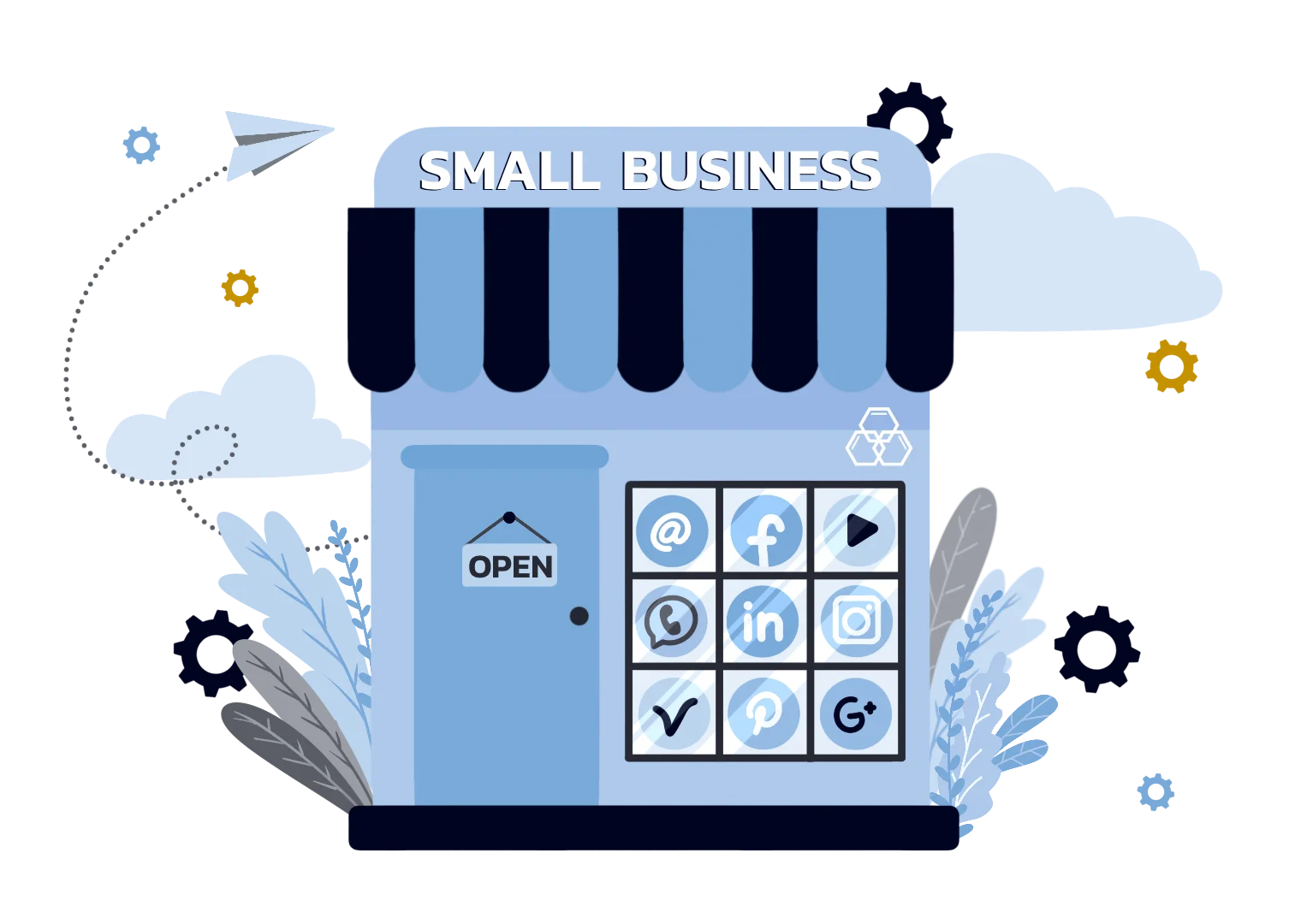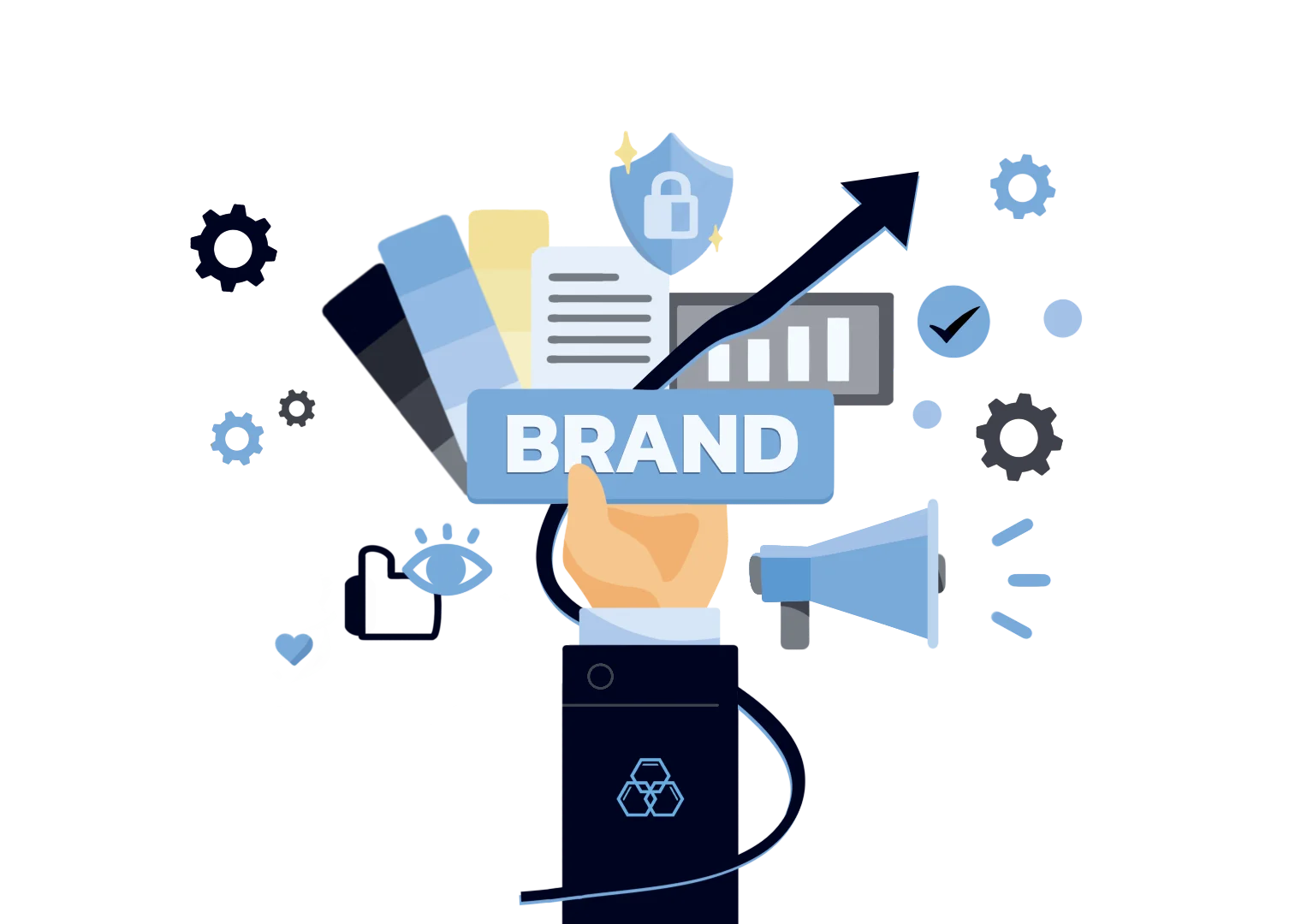20 Advertising Terms You Should Know
Have you ever wondered what words like "impressions" and "click-through rates" mean? But worry not, marketing friends!

Knowing these advertising words is essential, whether you're new to marketing or already a pro. It helps you read reports, talk to others about your plans, and get the best results from your advertising.
In this blog, we'll explain these words in simple terms, show you how they're used, and give you the knowledge you need to succeed in today's marketing world.

Let's get started!
1. Call to Action (CTA)

This is the part of your ad that tells people what you want them to do next, like "Visit our website" or "Buy now!" A strong CTA directs viewers toward your desired outcome.
A clear CTA is like a roadmap for your audience. It tells them exactly what step to take after seeing your ad, increasing the chances of conversion (turning viewers into customers).
For effective use of CTAs, keep them short, action-oriented, and relevant to your ad's message. Use strong verbs and make it easy for viewers to understand what they'll get by following your call.
2. Cost Per Acquisition (CPA)

This term refers to the average amount you spend to acquire a new customer through advertising efforts. It's calculated by dividing your total ad spend by the new customers you acquire.
CPA helps you understand the efficiency of your advertising campaigns. By tracking it, you can see if your ads generate customers at a profitable cost for your business.
Expert marketers always find ways to optimize your campaigns to lower their CPA. This could involve targeting ads more effectively, improving your landing page conversion rate, or negotiating better ad rates. A good target audience research is also essential to optimizing CPA.
3. Cost Per Click (CPC)

This is the amount you pay each time someone clicks on your online ad. It's a common pricing model for online advertising, where you only pay when someone shows interest in your product or service.
Understanding CPC helps you gauge the effectiveness of your ad in driving clicks. Comparing the cost of clicks across different platforms and audiences also helps you optimize your ad budget to focus on platforms where ads are most effective.
A high click-through rate (CTR) indicates a well-designed ad that resonates with your target audience. However, always keep an eye on your budget to ensure you're not paying too much per click.
4. Cost Per Mille (CPM)

This term translates to "cost per thousand" and refers to the price advertisers pay for every 1,000 impressions your ad receives. Ad Impressions simply mean the number of times your ad is displayed, regardless of whether someone clicks it.
CPM is useful for marketing campaigns where brand awareness is the primary goal. It helps you understand the reach of your advertising efforts and how many people you're exposing your message to.
CPM is best used for display advertising to build brand recognition. Consider factors like the target audience and the web page where your ad is displayed to track your ad budget and performance.
5. Impression

An impression is simply one instance where your ad is shown to someone. It counts every time your ad appears on a screen, regardless of whether someone clicks on it, scrolls past it, or notices it.
Impressions tell you how many people have potentially seen your ad. This basic metric helps you understand the reach of your advertising campaign.
Impressions alone don't tell the whole story. There is a possibility that your ad may appear on your audience’s devices, but it may not result in brand awareness or conversion. You need to track other metrics like click-through rate (CTR) to see how well your ad is performing in terms of engagement.
6. Keyword

These are the words and phrases people type into search engines when looking for something. In search engine marketing, you can target specific keywords to ensure your ads are shown to people searching for products or services related to yours.
Keywords are the bridge between your target audience and your ad. Targeting the right keywords increases the chances that people genuinely interested in your offer will see your ad.
Conduct keyword research and identify relevant terms with good search volume but low competition as part of the search engine optimization strategy. For example, the word ‘branding’ will be a challenge to rank for since many websites are competing with it, but if we can narrow it down to ‘branding services’ or ‘what is a brand promise,’ your content has more chances to show up on the Search engine results page (SERP).
Moreover, use a mix of broad and specific keywords to reach a wider audience while staying targeted.
7. Lead

This refers to a potential customer who has shown some interest in your product or service. In advertising, leads are often generated when someone clicks on your ad, signs up for your email list, or downloads a piece of content you offer.
Leads are the lifeblood of your sales funnel. By generating leads through advertising, you build a pool of potential customers who can be nurtured and converted into paying customers.
There are many lead-building strategies, but commonly, making compelling content that helps your audience with their problems can turn them into your leads.
8. Brand Reach

This metric refers to the total number of people who have seen your brand through your advertising efforts. It reflects the overall exposure your brand receives.
Brand reach helps you understand how many people know about your brand's existence. This is particularly important for building brand recognition and establishing yourself in the market.
Consider using a variety of advertising channels to maximize your brand reach. Track your reach over time to see how your advertising efforts expand brand awareness.
9. Affiliate Marketing

This marketing approach allows you to partner with other websites or influencers to promote your products or services. Your affiliates earn a commission for each sale they generate through their promotions.
Affiliate marketing allows you to leverage the audience and reach of established affiliates. It's also a way to widen your advertising reach to a broader target market and potentially drive sales.
Choose affiliates who align with your brand and target audience. For a niche target audience, try to focus more on micro-influencers with platforms like TikTok. Make sure that you have a clear commission structure and provide your affiliates with marketing materials and support to ensure their success.
10. Data Analytics

This refers to collecting, analyzing, and interpreting data to gain insights and improve your marketing efforts. In advertising, data analytics helps you understand how your campaigns are performing and identify areas for improvement.
Data analytics is essential in making data-driven decisions in advertising. By analyzing data, you can see what's working and what's not and optimize your campaigns for better results.
Identify the goals of your marketing campaigns first and focus on their key metrics. For example, brand awareness campaigns usually focus on leads and impressions, and a sales campaign can be measured by conversion and CPA. Use the data analytics and ad server tools to visualize your data and gain actionable insights.
11. Bounce Rate

This metric refers to the percentage of visitors who leave your website after viewing only one page. A high bounce rate might indicate that your landing page isn't relevant to your ad or that it's not engaging enough to keep visitors interested.
Bounce rate helps you understand how effectively your landing page engages your visitors.
Analyze your bounce rate alongside metrics like time spent on the page to get a clearer picture. Use tools like Hotjar to understand where the users usually go and see if there is a pattern that you can get insights for your website optimizations. A low bounce rate can be attained if your landing page is relevant to your ad message and offers a clear value proposition to visitors.
12. Brand Awareness

This refers to the extent to which consumers are familiar with your brand and recognize its name, logo, or products. Building brand awareness is the key to establishing yourself in the market and creating a positive perception for your target audience.
Strong brand awareness can influence purchasing decisions and make your brand the go-to choice when consumers need what you offer.
Explore various advertising channels and strategies to increase brand exposure. Then, narrow down to channels where you have the most effective ad performance. Also, create memorable brand experiences in your ad and use consistent branding across all your marketing efforts.
13. Brand Channel

This refers to your specific platforms or methods to communicate your brand message to your target audience. Brand channels include social media, email marketing, search engine advertising, and traditional advertising channels like TV and print.
Choosing the right brand channels allows you to reach your target audience where they spend their time. It helps you tailor your message and creativity to each platform for maximum impact.
To understand the right channel for your ad, analyze your ad network, target audience, and media consumption habits. Younger audiences are commonly found on platforms like TikTok, and older ones are on Facebook. Identify how active your audience is on social media and understand their preferences and habits.
14. Conversion Rate

This metric refers to the percentage of visitors who take a desired action after seeing your ad or visiting your website. This action could be a purchase, a sign-up, a download, or anything else you define as a successful conversion.
Conversion rate is a key indicator of the effectiveness of your advertising campaigns. It tells you how well your ads turn viewers into paying customers or leads.
Make sure that you monitor your conversion rate across different campaigns and landing pages. Learn what's working well and identify areas for improvement to optimize your campaigns for higher conversions.
15. Copy

This refers to the written content of your advertisement, like a blog or a banner ad, including headlines, body text, and calls to action. Effective copy is clear, concise, and persuasive, grabbing attention and motivating viewers to take action.
Compelling copy is the voice of your ad. It's what draws people in and convinces them to consider your offer.
Write a clear and concise advertising message that speaks directly to your target audience's needs and desires. Focus on the benefits of your product or service and use strong calls to action to encourage engagement.
16. Direct Response Ads

This refers to advertising campaigns that aim to generate an immediate response from viewers, such as a purchase, a phone call, or a website visit. Direct response ads often include strong calls to action and trackable metrics to measure their effectiveness.
Direct response advertising is ideal for campaigns that focus on the bottom line - your sales and revenue. It's a performance-driven approach that allows you to measure your return on investment (ROI).
Online direct response ads often use clear and concise copy that emphasizes the benefits of your product and includes a strong CTA.
Throughout your marketing effort, leverage tracking mechanisms to analyze your results and optimize your campaigns for higher conversion rates.
17. Display Advertising

This type of online advertising uses visual elements like banner ads, images, and video ads to grab attention and promote your brand or product. Display ads are typically placed on websites, apps, and social media platforms.
Compelling display ad campaigns build brand awareness, generate interest, and drive traffic to your website. It's also a versatile approach that allows you to target specific audiences and reach a broad range of potential customers.
Since the draw for this type of ad is mainly visual, focus on using eye-catching visuals, compelling messaging, and other rich media elements in your display ads. Also, consider targeting options to ensure your ads are shown to the right people at the right time and save ad budget costs.
18. Email Advertising

This type of digital advertising involves sending promotional emails to a list of subscribers who have opted-in to receive them. Email advertising is a great way to nurture leads, promote special offers, and drive sales.
Email marketing lets you connect directly with a targeted audience who has already expressed interest in your brand. This allows you to lead them to your marketing funnel and compels them to make a purchase of your product or services. Moreover, It's also a cost-effective way to build relationships and encourage repeat business.
An effective email advertising campaign always starts by building a high-quality email list with subscribers who are genuinely interested in your offerings. For a more effective approach, segment your audience to personalize their emails and make them more relevant. Remember to focus on providing value and avoid being overly promotional.
19. Ad Frequency

This refers to the number of times a specific user sees your ad within a given timeframe. High ad frequency can lead to ad fatigue, where viewers may become annoyed with seeing the same ad repeatedly.
Finding the right ad frequency balance is crucial. While some exposure is necessary, too much can backfire and might put your audience off. Direct response ads are usually displayed less frequently, and ads focusing on brand awareness can be displayed more frequently.
Monitor your ad frequency across campaigns and platforms. If available, use frequency capping features offered by advertising platforms to limit how often users see your ad.
20. Native Advertising

This type of advertising seamlessly blends in with the surrounding content on a website or app. Native ads aim to be informative and engaging rather than overtly promotional.
Native advertising can be a less intrusive way to reach your target audience. Presenting your message naturally within the content flow can grab attention and drive engagement.
To maintain transparency with viewers, make sure your native ads are clearly labeled as advertising. Craft compelling and informative content that aligns with the platform and audience interests.
Final Thoughts: You've Got This!
Remember, this blog only scratched the surface of the myriad of terms in the advertising. But at least you know some of these words that the next time you build an ad campaign, you know what to say to your marketing team.
Let us know how Evolv can help you with your marketing efforts!
If you want to learn more about the terms, check out our blog page and be updated with the latest insights on branding.






